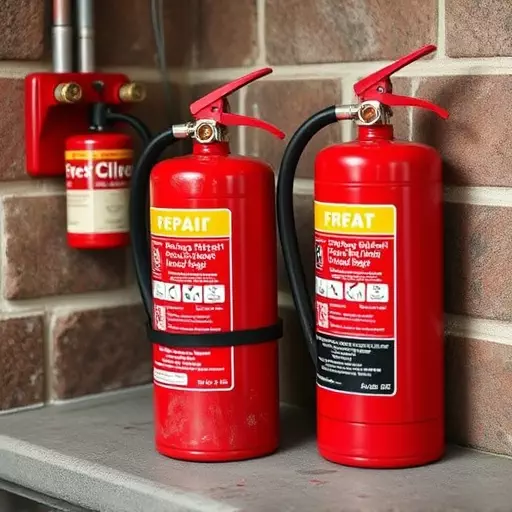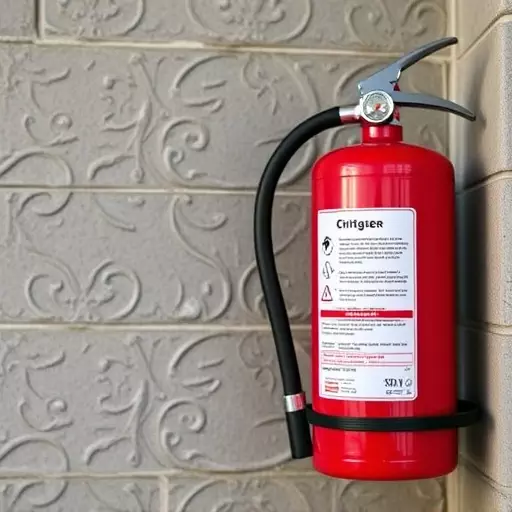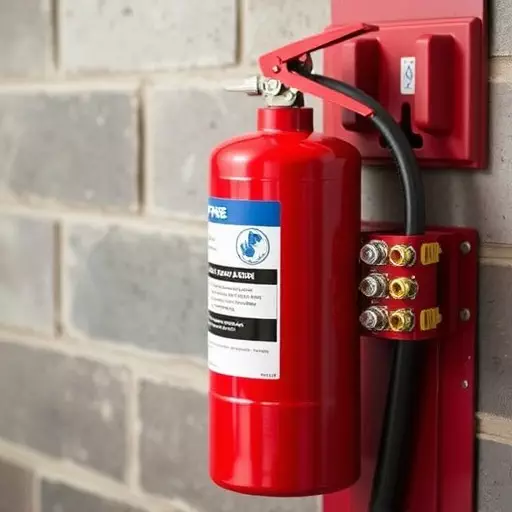Promptly identifying signs like physical damage or corrosion in Fayetteville is key for effective fire safety. These indicators trigger the fire extinguisher repair process, offering enhanced safety, reliable equipment, legal compliance, and risk minimization. Regular inspections and maintenance extend lifespan, save costs, comply with regulations, and ultimately protect property and lives.
In every home and workplace, fire extinguishers are vital life-saving tools. However, these critical devices can become clogged or malfunction over time, leaving you unprepared for emergencies. Understanding the fire extinguisher repair process in Fayetteville is essential to ensure your safety. Learn to identify signs that a fire extinguisher needs repair, such as limited water flow or a damaged nozzle. Regular maintenance and prompt repairs offer numerous benefits, including enhanced fire safety, improved performance, and peace of mind.
- Understanding the Fire Extinguisher Repair Process in Fayetteville
- Identifying Signs That Indicate a Fire Extinguisher Needs Repairs
- Benefits of Regular Fire Extinguisher Maintenance and Repairs
Understanding the Fire Extinguisher Repair Process in Fayetteville

In Fayetteville, understanding the fire extinguisher repair process is paramount for ensuring safety and compliance with local regulations. The initial step involves identifying signs that a fire extinguisher needs repair, such as physical damage, corrosion, or failure to operate when tested. These indicators highlight potential issues that could hinder the effectiveness of the extinguisher during an emergency.
By promptly addressing these concerns, businesses and residents in Fayetteville can leverage the benefits of fire extinguisher repair, including enhanced safety measures, improved equipment reliability, and adherence to legal standards. Regular maintenance not only guarantees the optimal functioning of extinguishers but also promotes a culture of preparedness among occupants, thereby reducing risks associated with fires.
Identifying Signs That Indicate a Fire Extinguisher Needs Repairs

If your fire extinguisher is showing signs of distress, it’s crucial to act swiftly. Identifying issues early on can prevent potential hazards and ensure its effectiveness in an emergency situation. Several indicators suggest that a fire extinguisher may need repairs or replacement. One of the most noticeable signs is physical damage; any dents, rust, or cracks could compromise its structure and performance. Moreover, if the extinguisher’s pressure gauge shows low pressure, it indicates a potential leak or mechanical problem.
Regular inspection also reveals operational cues. A hissing sound when pressed, unusual odors, or difficulty in extending the hose are red flags. Over time, hoses can become clogged with debris, restricting water flow, and rendering the extinguisher useless. The benefits of fire extinguisher repair in Fayetteville are clear: it ensures the safety and reliability of your equipment, guarantees optimal performance during critical moments, and complies with local fire code regulations, avoiding potential fines or legal issues.
Benefits of Regular Fire Extinguisher Maintenance and Repairs

Regular fire extinguisher maintenance and repairs are essential for any business or home in Fayetteville. The fire extinguisher repair process involves a series of checks to ensure the device is fully functional and ready to use in an emergency. By scheduling routine inspections, you can avoid costly and dangerous clogs or malfunctions during critical moments.
Benefits of regular maintenance include improved safety, as a well-maintained fire extinguisher will operate effectively when needed; extended lifespan of the equipment, reducing replacement costs; and compliance with local fire safety regulations. Recognizing the signs that a fire extinguisher needs repair, such as corrosion, damage, or unusual noises, is crucial. Prompt action on these issues can prevent accidents and save lives, making regular maintenance an investment in your property’s protection.

